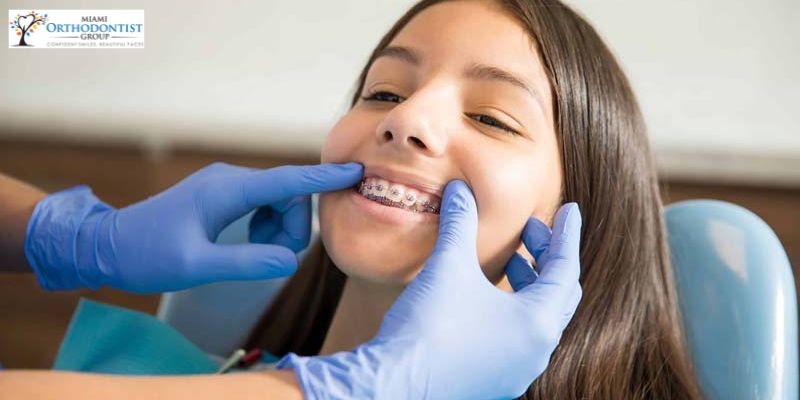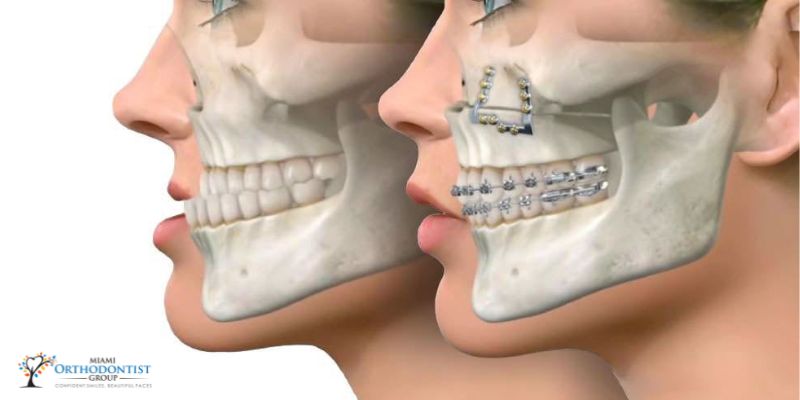Orthodontic care is frequently considered a method to make someone’s smile more attractive and straighten their teeth. While it is undeniably one of the primary purposes of orthodontic care, it is not the only one. In reality, orthodontic treatment can also aid in improving speech and jaw alignment for those with specific orthodontic issues.
In this article, we will walk you through how orthodontic treatment can enhance speech and jaw alignment and some common orthodontic issues contributing to these issues.
How Orthodontic Treatment Improves Speech
 The coordination of different muscles and structures in the mouth and throat is required for speech, which is a complicated process. Speaking clearly and efficiently can be improved if these structures align.
The coordination of different muscles and structures in the mouth and throat is required for speech, which is a complicated process. Speaking clearly and efficiently can be improved if these structures align.
Multiple methods that orthodontic treatment can enhance speech are listed below. First, it can fix issues with how the molars are positioned. For instance, a severe overbite or underbite can make it challenging to pronounce certain sounds, like “s” or “th.” Orthodontic therapy can enhance how these sounds are produced and improve speech clarity by repositioning the teeth.
Orthodontic treatment can help better the position of the tongue and other speech-related muscles and fix dental issues. For instance, a narrow palate can restrict the tongue’s ability to move easily, impeding speech. The palate can be made larger through orthodontic treatment so the tongue has more space to move, enhancing speech.
How Orthodontic Treatment Improves Jaw Alignment
 Additionally, speech and general oral health are significantly influenced by the location of the jaws. Incorrect jaw alignment can result in many issues, such as trouble chewing and swallowing, persistent jaw pain, and even sleep apnea.
Additionally, speech and general oral health are significantly influenced by the location of the jaws. Incorrect jaw alignment can result in many issues, such as trouble chewing and swallowing, persistent jaw pain, and even sleep apnea.
Numerous methods exist for orthodontic treatment to help improve jaw alignment. Using braces or aligners to move the teeth into the right position is one of the most popular ways. Additionally, by doing this, the mandible can move into a better position, which enhances the alignment of the jaws as a whole.
In some circumstances, orthodontic therapy may also entail using appliances to alter the jaws’ natural growth. For instance, a device that promotes the development of the upper jaw may benefit a person with a severe underbite because it can help correct the underbite and improve jaw alignment.
Orthodontic Issues that Can Affect Jaw Alignment and Speech
Orthodontic problems can impact your speech and jaw alignment and the look of your teeth. Alignment problems can result in various issues because the position of the teeth and jaws can affect how you talk and chew. Here are some of the most prevalent jaw alignment and speech problems caused by orthodontic problems.
Underbite
An underbite occurs when the lower front teeth protrude before the upper front teeth. This can cause similar issues to an overbite, including difficulty with speech and jaw alignment. In addition, an underbite can put extra pressure on the jaw joint, leading to jaw pain and other issues.
Overbite
This is an overbite when the top front teeth cross the lower front teeth. The top teeth may protrude too far forward, affecting speech and jaw alignment. For instance, an overbite may restrict the tongue’s ability to move, making it challenging to produce sounds like “s” and “th.” Additionally, an overbite can increase strain on the temporomandibular joint, or TMJ, resulting in jaw pain and other problems.
Open Bite
An open bite occurs when there is a gap between the upper and lower teeth when the jaws are closed. This can make it difficult to bite into food and affect speech. For example, an open bite can cause difficulty with certain sounds, such as “t” and “d,” as the tongue may not be able to touch the teeth properly.
Crossbite
When the top teeth overlap the lower teeth, this is known as a crossbite. Both speaking and chewing issues may result from this. For instance, a crossbite may restrict the tongue’s ability to move freely, making it challenging to create some sounds, like the “s” and “z.”
Tongue Thrust
Tongue thrust is a common issue affecting speech and jaw alignment. It occurs when the tongue pushes against the front teeth during swallowing, speaking, or resting. This can cause the teeth to move out of position and affect the jaws’ development. Over time, tongue thrust can lead to speech issues and problems with jaw alignment and bite.
Narrow Palate
A narrow palate occurs when the roof of the mouth is too narrow. This can affect the tongue’s position and make it difficult to produce certain sounds. In addition, a narrow palate can lead to crowding of the teeth and other orthodontic issues.
Treatment of Speech and Jaw Alignment-Related Orthodontic Issues
Several treatment choices are available if your orthodontic problem is causing speech problems or jaw alignment. Your particular problem and its seriousness will determine the best action plan.
Braces are among the most widely used therapies for orthodontic problems. Braces use brackets and wires to move the teeth into the right position. This can help enhance speech and jaw alignment. Clear aligners, like Invisalign, can address various orthodontic issues besides conventional metal braces.
Conclusion
Orthodontic therapy is not just limited to straightening teeth and enhancing smiles. It can also improve speaking and jaw alignment in people with orthodontic problems. Orthodontic treatment can enhance a person’s ability to talk, chew, and even breathe by realigning the teeth and jaws.
Consider orthodontic therapy as a potential remedy for jaw alignment or speech issues. Your problems’ root cause and the best course of action can be determined during a consultation with an orthodontist.


